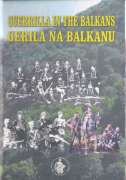Četničke (gerilske) jedinice Kraljevine Srbije – borci protiv terora turskog okupatora
Cethnik (Guerrilla) Units Of The Kingdom Of Serbia – The Fighters Against The Terror Of The Turkish Occupier
Author(s): Milan MijalkovskiSubject(s): History
Published by: Institut za savremenu istoriju, Beograd
Keywords: Chetniks; četa; First Balkan war;
Summary/Abstract: The Serbs are the nation small in number but great in their freedom-loving spirit and chivalry, which they always show by confronting those who are trying to attack their honour, dignity and freedom. As they live in the territory which is geopolitically very important and often marked as “the house along the road”, in the long history of Serbian (Christian) nation there were periods of war and peace following one another – freedom and prosperity, slavery, terror and genocide. The Serbs have survived through rises and falls, but always upright. Defending their freedom and the right to nation-state, with enormous human sacrifices they won victories over seemingly unconquerable aggressors and oppressors. During the periods when the Serbian territories were occupied, the task to defend freedom was performed by the bravest of Serbs, the volunteers who found the most appropriate ways for military organization and waging war against the occupier, the warfare that had all the characteristics of guerrilla. In the second half of 19th century and at the beginning of 20th century these people were called Chetniks, and their basic organizational unit was called četa (the company). They conducted successful guerrilla actions against the Turkish occupier, and the maximum success was achieved during the First Balkan war (1912) when they finally liberated the occupied Serbian territories, the territory of the 14th century Dusan’s Empire – the Old Serbia and Macedonia. Although there are many papers on Serbian Chetniks (guerrilla fighters), their contribution to the liberation of Serbian national being have not been studied sufficiently. If this paper draws attention and inspires researchers to get engaged in further researches of this topic, rather a modest goal that has been set would be achieved.
Journal: Zbornik radova Instituta za savremenu istoriju
- Issue Year: 2007
- Issue No: 09
- Page Range: 59-81
- Page Count: 23
- Language: Serbian
- Content File-PDF

